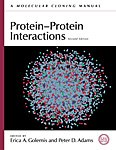Protein Interactions

Product lists for commonly used protocols from Cold Spring Harbor Protocols
Selected Protocol from "Protein-Protein Interactions: A Molecular Cloning Manual, 2nd Edition,", Erica A. Golemis and Peter D. Adams.
Protein Interactions Captured by Chemical Cross-linking: One-Step Cross-linking with Formaldehyde
Owen W. Nadeau and Gerald M. Carlson

Abstract
This protocol describes a method for chemical cross-linking of proteins using formaldehyde. With the exception of zero-length cross-linkers, formaldehyde has the shortest cross-linking span (~2-3 Å) of any cross-linking reagent, thus making it an ideal tool for detecting specific protein-protein interactions with great confidence. Despite its simple chemical structure (CH2O), formaldehyde’s single carbonyl group functions essentially as a homobifunctional reagent and is capable of conjugating targets through two different chemical pathways. In Mannich-type reactions, which typically require elevated temperatures (37 °C or above) for a period of 2-24 hours for acceptable yields, formaldehyde condenses with amines (1°, 2°, or salts of ammonia) and compounds with active hydrogens to form stable cross-links. Formaldehyde also reacts with amines to form highly reactive immonium cations that are reactive toward protein-containing nucleophiles, including sulfhydryls, amines, phenols, and imidazoles. The latter reaction is more rapid than the former and is generally the more predominant in typical protein cross-linking reactions at ambient temperatures.
Materials
Product Association Disclaimer: The products listed for this specific protocol were selected either to match or to supplement the products listed within the actual protocol. Our products and reagents have been qualified for usage, but may not have been validated for this specific application. Please refer to the detailed product description on the usage of specific products of interest.
To continue reading please sign in or create an account.
Don't Have An Account?